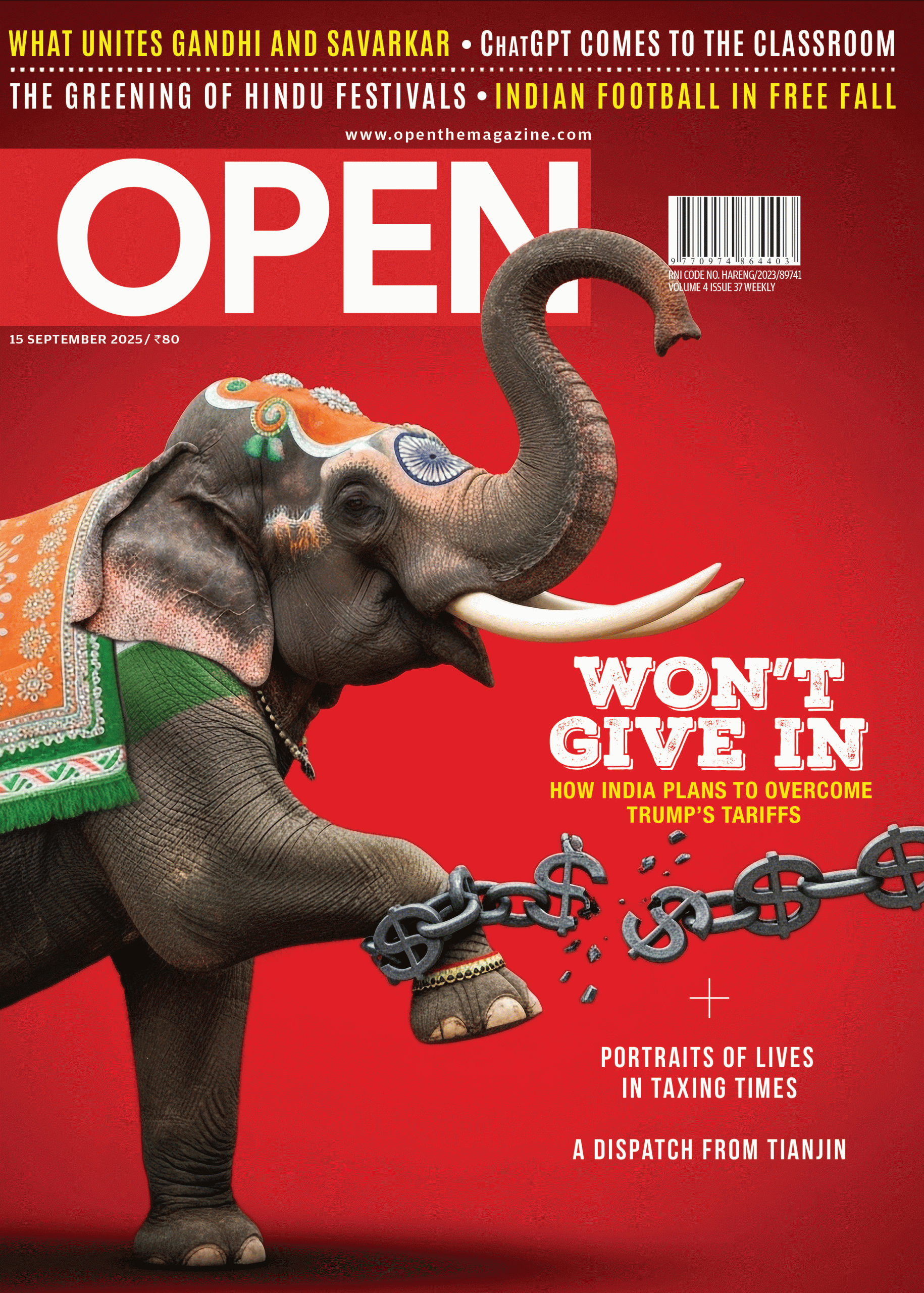How Hindi Films Got So Good
...and started looking beyond tired formulas and megastars and multi-starrers and all those yawns
 Rahul Bhatia
Rahul Bhatia
 Rahul Bhatia
|
14 Jul, 2011
Rahul Bhatia
|
14 Jul, 2011
/wp-content/uploads/2015/11/hindi-movies.jpg)
…and started looking beyond tired formulas and megastars and multi-starrers and all those yawns
There are many, many theories about why Bollywood has, in the past three or four years, produced an unusual number of good movies. (To avoid the subjectivity thing, ‘good’ refers to new stories told in interesting ways.) One explanation, commonly heard, is that the movies are now a more democratic playground, with new talent all over the place. We know this is true because Gulzar or Javed Akhtar did not write the lyrics for Gandu. Who are these people? They aren’t necessarily in the papers. These are folks who don’t answer their phones because they are too busy writing scripts. They don’t want to be photographed because they haven’t shaved for ages because they have been writing.
Another explanation is that producers are undergoing “a change in their mindset”. There is also serious talk of a more refined theatre-goer with tastes that range from Dabangg to the tip of the long tail we just discovered. And since there are more producers, and therefore more movies being made, and only a fixed number of Khans, something has got to give. All these theories ring true. We know this because we have the evidence of our senses, our memories, and because Shah Rukh Khan turned up, unshaven and stoic, devoid of the tics and smirks that make him a star, in a movie with a love interest named redemption.
Since this is not a dispassionate exploration, and this piece relies as much on new testimony as old memories, let’s go back to 1995. Year 1995 has to be seen in the context of the 80s, which, with movies such as Love Love Love, Insaaf Kaun Karega, and Love 86, was an utterly sinister decade. In a recent conversation with this magazine, Abbas Tyrewala blamed those dark days on an over-reliance on Amitabh Bachchan. If he was unavailable, it meant that a filmmaker had to rely on a story instead of a superstar. Now, you would think that somebody would have figured this out. What happened instead was… multi-starrers. Three minor stars for the price of one superstar. So 1989 had Tridev, with Naseeruddin Shah, Sunny Deol and Jackie Shroff.
Leading nicely into 1995 were a few love stories by Sooraj Barjatya and Aditya Chopra. In 1995, in at least one packed movie hall, a large audience, children among them, sat still, watching a love story that was about so much more than love. In just a few hours, Rangeela broadened the boundaries of what both filmmakers and audiences thought possible. In that sense, considering the decade that followed, filmmakers have been trying to catch up since. In the years after Rangeela, a host of names we know today worked with Ram Gopal Varma, the film’s director—Tyrewala, Anurag Kashyap, Jaideep Sahni, Sriram Raghavan, Madhur Bhandarkar, E Nivas, Shimit Amin and Tigmanshu Dhulia. There were many others. The Factory, as Varma officially called it, wanted to release a film every Friday. But the Factory also produced, honed and released a stream of talent.
Raj Kumar Gupta, the director of Aamir and No One Killed Jessica, says that RGV was an inspiration to a generation because he made movies without stars. “A lot of people followed the model. Yash Raj Films, the Bhatts, they followed him. Suddenly people saw you could make movies with different subjects.”
Madhu Mantena, Varma’s cousin and perhaps his oldest collaborator, says, “Ramu did it blindly. He didn’t do it with commonsense. It was a lot more difficult than it is now to raise funds. Back then, there was a lot of hardship, many losses. Nobody was producing.” Some of Varma’s protégés lingered between film and television, directing one-off episodes, waiting for the slightest opening. Kashyap, who produced last year’s landmark film, Udaan, wrote of living in hope that someone would eventually buy it.
The struggle never really went away, so what changed? Why are there more good movies than ever before? Akshat Varma, who wrote Delhi Belly, showed it to “everyone”, according to Abhinay Deo, the film’s director. “I mean everyone, including UTV. All of them said it was nonsense, and it would never work.” The story goes that Kiran Rao, Aamir Khan’s wife, flipped through the script casually while he wasn’t around, found it funny, and asked him to read it with her. Once Khan was convinced, UTV came on board too. The script took nine years for Varma to write; it took pure chance for the script to become a movie.
Khan, Deo says, “chooses films from his heart. ‘I think this kind of story should be told’. It’s not like ‘Oh, I want to make money first’. Corporates have another approach: ‘What’s going to work? What’s going to get me my numbers?’”
Incidentally, there’s another theory about why this could be the start of a golden age for indie films. It involves numbers. Raj Kumar Gupta believes that it has become easier for writers and directors to locate where the money is. “Earlier, since there were just a few producers, you didn’t know who they were. Now you can put a face to the money. That’s important because even if you can’t get your script made into a movie, you know who to show your script to.”
There are more movie producers than ever before too, says Deepak Malhotra, associate editor of Film India, the phone directory for the movie business (and easily the most interesting B2B publication in the country). Malhotra updates this directory every six months, and he says the number of pages he allocates to the ‘producers’ section has gone up significantly “in the last three to four years”. Interestingly, he adds, his marketing team has observed that the drop in age of the average producer is dramatic. “Earlier, they used to be over 60 years old. Now, most of them are between 30 and 40.” In addition, he notes that “80 per cent of producers were angootha chhaaps (figures were tossed lightly in this conversation). Now 95 per cent of them are educated. Another pertinent discovery: earlier, you simply had producers. Now, “there’s the producer, the line producer, this producer, that producer.”
In the course of several interviews, it was pointed out that lean budgets and edgy subjects went hand in hand. “The lower the budget,” says Vikram Motwane, director of Udaan, the easier it is to recover costs. The revenue streams that exist today mean that box office collections no longer play as vital a role as they did earlier. “If I made Udaan a few years ago, I’d have had to do it in Rs 60 lakh, with a release of 10-15 prints. But I made it with Rs 3 crore, and it was released on 200 screens,” Motwane says. “Getting it made is easy. Marketing and distributing it is the difficult part.” Motwane believes—and others feel the same way—that while it’s still hard to land a producer, untested ideas have a better chance today. Even movies that did not make money but were on the verge of profitability gave a producer pause. Perhaps he could try it again.
An ‘efficiency in production’ is how Vikas Behl puts it. Behl, the former chief operating officer of the UTV arm Spotboy, produced Aamir and Dev. D, two films with a distinct visual style and a unique mode of storytelling. “We made Aamir in 19 days,” he says. When he reads scripts, Behl says, he needs to read “50 of them to take one to the next level. You need to evaluate its marketability. For Aamir, the realism was marketable. For Dev.D, we could market the contrast between Paro and Chanda.” I ask if they have hit a kind of marketing sweet spot. He says, “It’s getting better. Are we there yet? No.”
Behl explains the contradictions in movie-making today. While there exists an unprecedented amount of audience testing and pre-release feedback and other theories grounded more in sales and marketing than in the intangibility of creation, this is also the period that has given birth to remarkably spontaneous (read: not born out of market research), memorable films. “People used to make films from their heart earlier too. I think we just took a break from making good films. Now, again, the only thing that works is ‘the non-formula’,” says Behl.
The non-formula came about, incidentally, because of the formula movie. Testing the waters of my knowledge—pretty damn shallow, admittedly—Mantena asked me why we had seen a surge of good movies lately, laughed at my feeble reply, and launched into a detailed explanation. “The secret is,” he says, “four to five years ago, what the mutiplexes did was to raise the per capita revenue from individuals.
“See…remember the time when we used to pay 50 bucks at most for a film [in big cities]? At that time, most of India [outside the big cities] was on a Rs 10-20 ticket. What this meant was that theatres outside the city made 5-10 bucks on a ticket. Make that 25 bucks for the big cities. Five years ago, there was a boom in India. Ticket prices went up to Rs 250, right? Fifty per cent of that went to the producer, right? So that meant that the revenue per ticket [for upscale theatres] went up to Rs 125. At a ticket price of Rs 250, a niche audience was now paying ten times the money it paid earlier. That started supporting new stories that never had that kind of support.”
So there you have it. Starving artistes with culture to share wait for the market to catch up. The money got there eventually.
“When Ramu made those films, the niche audience was not able to give enough money to break even,” Mantena says. “So when you did a film like Ab Tak Chappan, or Ek Haseena Thi, even though a lot of people loved it, and it told a new kind of story, its revenues didn’t help Ramu make his next film.”
I asked Vikram Malhotra why Bollywood was making good films. Malhotra, the chief operating officer of Viacom18, which produced Shaitan, Tanu Weds Manu, and Pyar ka Punchnama, heard out the question. “That sounds like an accusation,” he says.
“It’s too early to say that the quality of our work has improved dramatically,” Malhotra says. “I think it’s fair to say that we have embarked on a journey… that with the advent of new talent, both behind the camera and in front of it, we are witnessing a marked improvement in the quality of output in certain genres.” Translation: there is some good stuff happening. He isn’t sure the industry can stand up and say, in one voice, that everyone has improved. But he is sure of one thing. If the Rs 4 crore film catches on, if only for the fact that there is widespread belief that movies with a restricted budget break even, it will be a mistake, because “these films will break you faster than you can say Jack Robinson”.
The recognition that unhealthy trends could upend, or hold back, the good things to come from the resurgence of original cinema is an underlying fear. Motwane, who calls Delhi Belly a “gamechanger for us”, believes there could be a lot more hybrid-language movies, a lot more openness towards sex.” But there is a fear—and who didn’t think about this? — that memories of the scripting, the crafting, and the story could evaporate, leaving copycat producers with the idea that movies where people have sex and swear a lot make loads of money.
“I don’t see people accepting something that’s half-hearted,” says Deo. “It’s not that simple.” It can’t become a formula. “You have to put out films that break the norm. You’re dealing with people from Kanpur far younger and far more exposed to the world than people who came before, and they’re hugely influenced by what they’ve seen. They download stuff. They watch American TV. There’s a fatigue that has set in.” Deo had an interesting take on formulaic movies. “My belief is that a formula is something you first put together, and see how it goes. But here they apply a pre-existing formula, and it doesn’t seem to work. So how can that be a formula?”
The great divide in movies, they all believe, is blurring. What is commercial and what is independent, one asks me, if both appeal to a commercial audience? “You just need more Aamirs,” Motwane says.
He pauses, and says, “one gamechanger was Delhi Belly, but the other one, for me, was Stanley Ka Dabba. Look at how Amol Gupte made it. There was a time when you couldn’t afford to have a camera, your own editing setup. Now you can make a movie using your phone. You’ve got no excuse.”
And that, in one sense, answers why Bollywood has been making good movies. They have no excuse not to.

/wp-content/uploads/2025/09/Cover_Tariff-scaled.gif)











More Columns
ChatGPT Comes to the Classroom Ullekh NP
Rebels Without a Cause Anup Rau
Giorgio Armani (1934-2025): The Perfect Fit Kaveree Bamzai